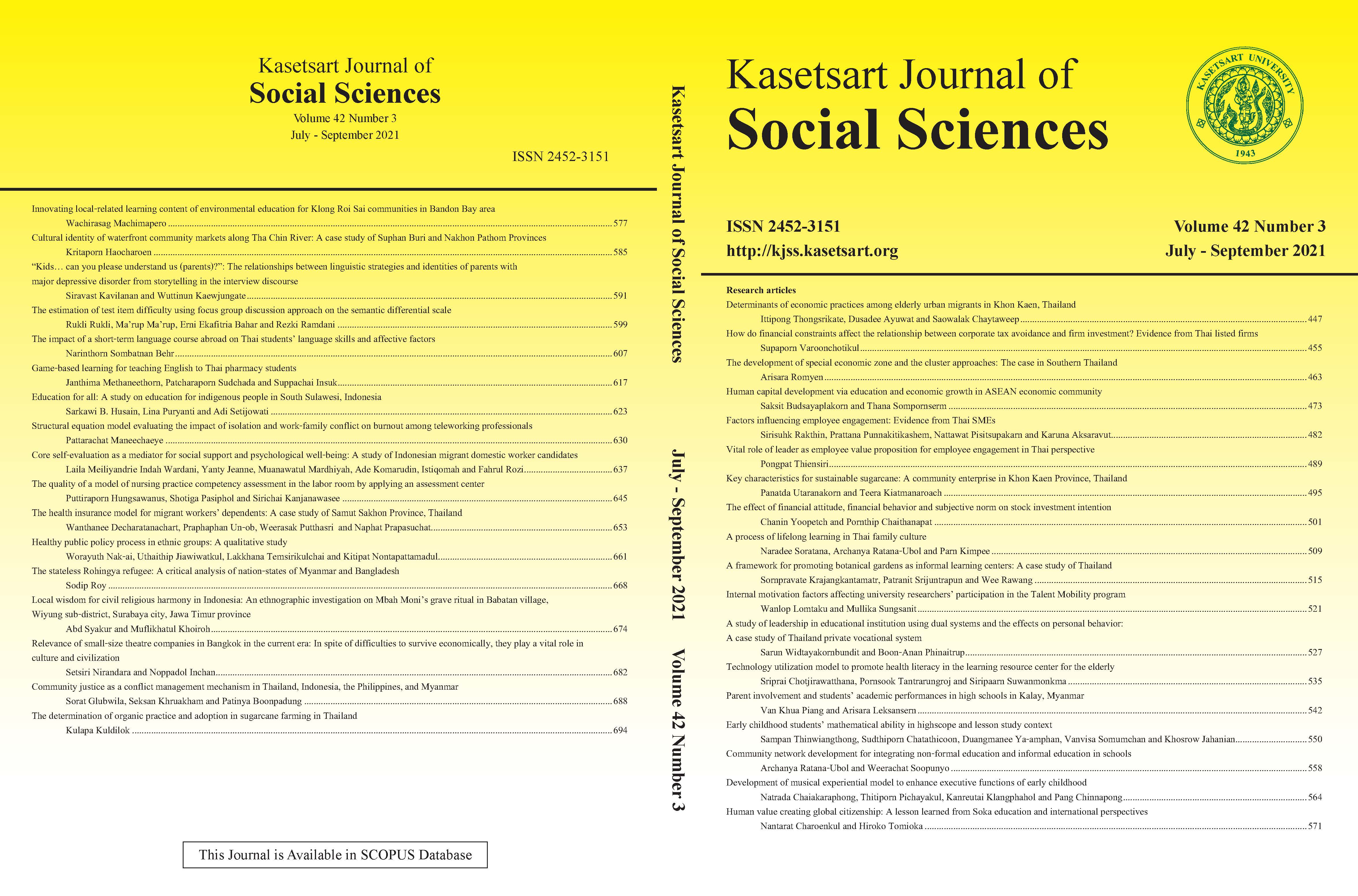Human capital development via education and economic growth in ASEAN economic community
Keywords:
AEC, development, economic growth, education, human capitalAbstract
This research aims to analyze causal relation between human capital development via education and economics growth in ASEAN Economic Community (AEC). Several human capital development variables and key economic indicators at the reginal level of 10 ASEAN countries during 1990–2018 are examined using the Pooled Bivariate Granger Causality Test. The results indicate that the FDI as well as education related indicators such as education index, average year of schooling, and pupil-teacher ratio can affect output growth in the region. Further evidence indicates that a rise in human capital can cause GDP growth and per capita GDP growth. The average year of schooling can attract Foreign Direct Investment (FDI). There is no direct evidence to support the idea that lower fertility rate in aging society will harm economic growth in this region.
Downloads
Published
How to Cite
Issue
Section
License

This work is licensed under a Creative Commons Attribution-NonCommercial-NoDerivatives 4.0 International License.
This is an open access article under the CC BY-NC-ND license http://creativecommons.org/licenses/by-nc-nd/4.0/










